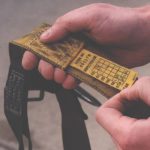Inspections of Fall Protection Systems – OSHA and ANSI Compliance
 This blog will be a two-part discussion on Inspections of Fall Protection Systems. This month we will cover the OSHA (Occupational Safety and Health Administration) and ANSI (American National Standards Institute) standards and how to stay in compliance according to revised Walking-Working Surface Standard which OSHA made effective by January 17, 2017. The revised OSHA Walking-Working Surface Standard along with the ANSI standard define the responsibility of the employer and employee for inspecting Fall Protection Systems in the Construction Industry and General Industry.
This blog will be a two-part discussion on Inspections of Fall Protection Systems. This month we will cover the OSHA (Occupational Safety and Health Administration) and ANSI (American National Standards Institute) standards and how to stay in compliance according to revised Walking-Working Surface Standard which OSHA made effective by January 17, 2017. The revised OSHA Walking-Working Surface Standard along with the ANSI standard define the responsibility of the employer and employee for inspecting Fall Protection Systems in the Construction Industry and General Industry.
General Industry Vs. Construction Industry
General Industry defined as all industries not included in agriculture, construction, or maritime. OSHA requires that fall protection is provided above four feet in general industry.
Construction Industry – “construction work” as construction, alteration, and/or repair, including painting and decorating. OSHA requires that fall protection is provided above six feet in the construction industry.
OSHA and ANSI as well as manufacturer’s instructions have laid the groundwork for the guidelines that set the inspection protocol for employers and employees. The revised Walking-Working Surface Standard drew many provisions from ANSI and ASSE (American Society of Safety Engineers) that set certain standards for inspections to remain in compliance and cultivate a safe work environment. Below describe the standards.
OSHA AND ANSI Standards
OSHA and ANSI Standards: Fall Protection Systems – specifically discusses the employer’s responsibility for personal fall protection systems and how to ensure the safety of their employees.
OSHA 1910.66 Subpart F and 1910.140 Subpart I – General Industry –This section specially discusses the standards/codes for fall protection equipment and systems such as lanyards, self-retracting lifelines, d-rings horizontal lifelines and anchorages.
 “Inspections” As stated in the standard personal fall arrest systems must be regularly inspected for significant defects, damage to deterioration, contact with flames and corrosives, loose or damaged mountings and non-functioning parts.
“Inspections” As stated in the standard personal fall arrest systems must be regularly inspected for significant defects, damage to deterioration, contact with flames and corrosives, loose or damaged mountings and non-functioning parts.
1910.140(c)(17) – A personal fall protection system or its components subjected to impact loading must be removed from service immediately and not used again until a competent person inspects the system or components and determines that it is not damaged and safe for use for employee personal fall protection.
1910.140(c)(18) – Personal fall protection systems must be inspected before initial use during each work shift for mildew, wear, damage, and other deterioration, and defective components must be removed from service.
OSHA 1926.500 Subpart M – Construction Industry – This section specifically discusses the inspection of the fall protection equipment as well as the employer’s responsibility to train their employees.
1926.502(d)(21) – personal fall arrest systems shall be inspected prior to each use for wear, damage, and other deterioration, and defective components shall be removed from service.
1926.503(a)(2) – The employer shall assure that each employee has been trained, as necessary, by a competent person qualified in the following areas: The correct procedure of erecting, maintaining, disassembling, and inspecting the fall protection systems to be used.
ANSI/ASSE z359.2-2007: Inspections Fall Protection Systems – This section specially discusses the standards set forth by ANSI in terms of manufacturer’s instructions for inspections and frequency inspections.
ANSI Z359.I.-2007-6 : Users of PFAS shall at a minimum, comply with all manufacturer instructions regarding the inspection, maintenance and storage of the equipment. The user’s organization shall retain the manufacturer’s instructions and make them readily available to all users.
6.1.1 – Equipment shall be inspected by the user before each use and, additionally, by a competent person other than the user at intervals of no more than a year.
6.1.2 – Inspection criteria for the equipment shall be set by the users’ organization. Such as criteria critical shall equal or exceed the greater of the criteria established by this standard or the manufacturer’s recommendations.
Inspection Responsibilities
These are the standards set forth by OSHA and ANSI and help define the responsibility of the employer and employee to inspect their fall protection systems. Typically, in terms of frequency of inspections, OSHA and manufacturer’s instructions defer to the ANSI standard for inspection programs which means prior to each use by authorized user and on a yearly basis by a competent person. Next month we will discuss the importance of having an inspection program to help enforce the standards set forth by OSHA, ANSI, and the manufacturer’s instructions. Ultimately, it is up to the employer and employee to ensure the safety of their work environment.

